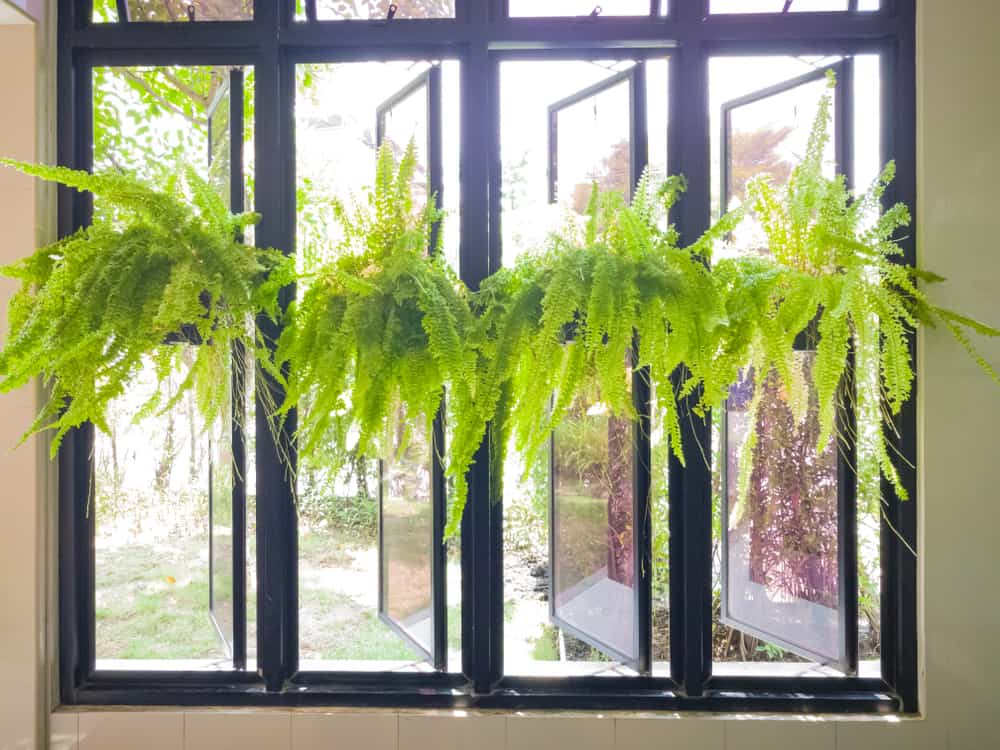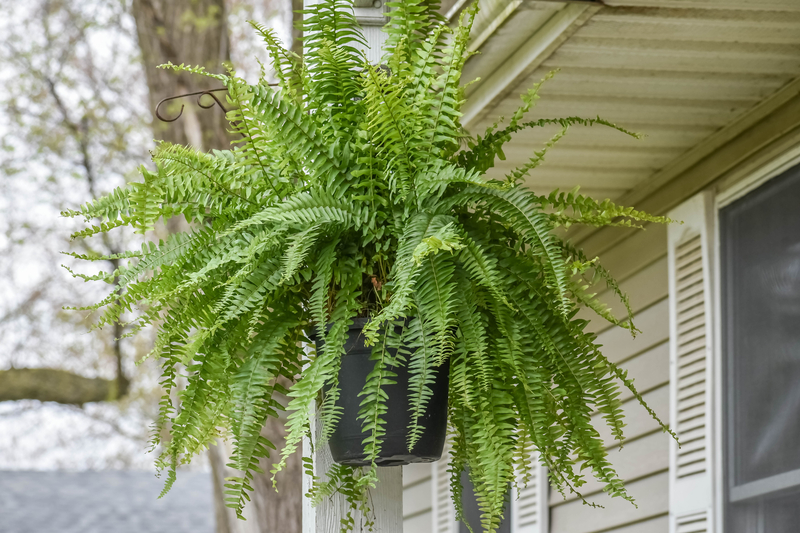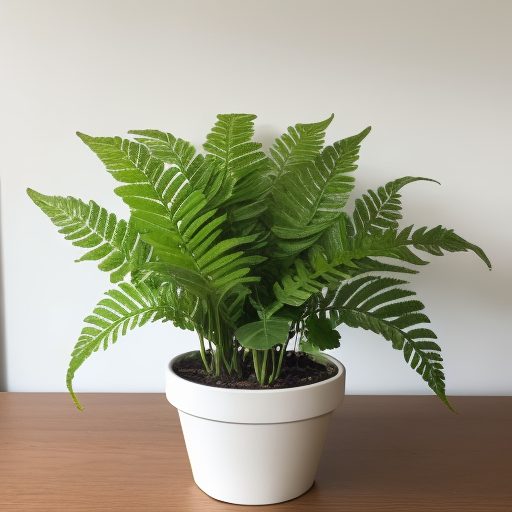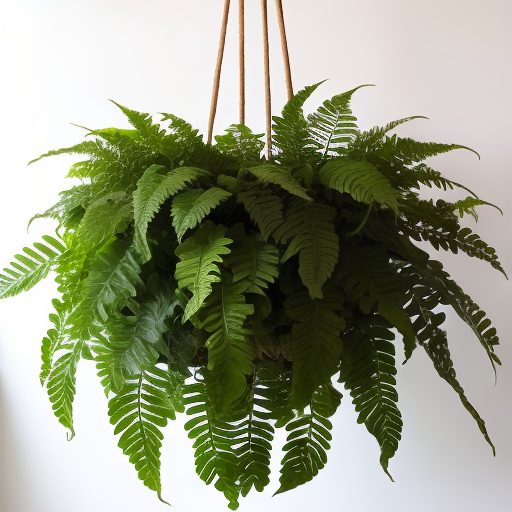HousePlantJoy is supported by our audience. When you purchase through one of our links, we may earn a small affiliate commission. As an Amazon Associate I earn from qualifying purchases. Your cost is not affected.
==================
Who hasn’t admired the Boston Fern? It’s that lush, feathery plant often gracing garden stores and homes. It’s officially known as Nephrolepis exaltata. This lovely plant has captured the hearts of many. Its vibrant green fronds bring a touch of nature indoors, making it a top choice for plant lovers. But like all beauties, Boston Fern problems can sometimes arise.
Boston Fern Problems and Solutions
As with all plants, the Boston Fern has its quirks. You might have overheard gardeners chatting about “Boston Fern problems.” Perhaps you’ve even faced a few challenges with your fern. Yellowing leaves, mysterious pests, or unexpected wilting? These can be a plant parent’s puzzle. It’s easy to feel a bit overwhelmed, especially if you’re new to the world of indoor ferns.
Don’t worry! We’re here to help. This guide aims to be your go-to resource for all things Boston Fern. We’ll cover everything from understanding its needs to troubleshooting common issues. So, stick with us whether you’re a seasoned gardener or just starting. Together, we’ll ensure your Boston Fern thrives and remains a proud part of your green collection.
What Makes the Boston Fern Unique
With so many ferns, why do we gravitate toward this particular green beauty? Let’s unravel the magic behind the Boston Fern’s charm.
That Classic Look
The Boston Fern, with its arching fronds and delicate, feathery leaves, has a timeless appeal. Whether it’s hanging gracefully in baskets or sitting pretty in pots, this fern adds a touch of elegance to any space. It’s like the little black dress of the plant world – always in style.
Air-Purifying
Beyond its beauty, the Boston Fern is a silent worker. It’s known to purify indoor air, remove toxins, and give back fresh, breathable air. So, while it’s sprucing up your living room, it’s also making sure you breathe a bit easier.
Easy Propagation
Do you have a friend who admires your Boston Fern? Good news! Propagating this fern is a breeze. With some care, you can share the Boston Fern love with friends and family. Before you know it, you might start a Boston Fern club in your neighborhood!
Versatility
Whether it is placed indoors, outdoors, in pots, or hanging baskets, the Boston Fern is adaptable. Do you want to dress up your porch or add some green to your office? This fern’s got you covered.
Rich History
Did you know the Boston Fern has been famous for over a century? That’s right! It’s not just a passing trend. This fern has charmed generations with its unique beauty and resilience.
So, the next time you gaze lovingly at your Boston Fern, remember you’re not just looking at a plant. You’re looking at a piece of history, a natural air purifier, and a testament to timeless beauty. How’s that for unique?
Common Boston Fern Problems & Their Signs
So, you’ve got a Boston Fern and are ready to give it the best life possible. But wait, what’s that? A yellow leaf? A strange bug? Ah, These are the challenges of being a plant parent. Let’s dive into some common Boston Fern problems and learn how to spot them.
1. Yellowing or Dead Fronds
Did you notice your Boston Fern’s fronds turning a pale yellow or even brown? This could be due to several reasons:
- Too Much Sun – Boston Ferns adore indirect light. But how about direct sunlight? I think not. It can scorch their delicate fronds.
- Dry Air – Boston Ferns thrive in a humid environment. Dry air can make them unhappy.
- Fungal Infection – Sometimes, the problem lies beneath the soil surface. Fungi can be sneaky culprits behind those yellowing leaves.
2. Root Rot (Pythium Root Rot)
If your fern feels a bit soggy, and you spot dark brown roots, root rot might be knocking at the door. Overwatering or keeping your fern in diseased soil can lead to this issue. And trust me, no Boston Fern wants to sit in waterlogged potting soil.
3. Rhizoctonia Aerial Blight
That’s a big name, right? This is a type of fungal infection. If your fern’s foliage has water-soaked spots that later turn brown, this might be the culprit. It’s essential to catch this early to give your fern the best shot at recovery.
4. Spider Mites and Other Pests
Tiny webs on your fern’s fronds? You might have spider mites. These pests are small but can cause big problems. They suck the life out of your Boston Fern, leading to stunted growth and unhappy leaves.
Solutions to Common Boston Fern Problems
Alright, we’ve identified the problems. Now, let’s roll up our sleeves and dive into the solutions. Your Boston Fern is counting on you. With these tips, you’ll have it flourishing in no time!
Addressing Yellowing or Dead Fronds
If too much sun is the issue, move your fern to a spot with dappled shade or indirect sunlight. Remember, Boston Ferns love the light, just not directly!
Dry air got your fern down? Try placing it on a tray filled with wet pebbles or invest in a humidifier. Your fern will thank you with lush, green fronds.
If a fungal infection is suspected, remove the affected parts. Repot your fern in a fresh potting mix. This ensures it’s free from any diseased soil.
Tackling Root Rot
If you find your fern’s roots looking more brown than healthy, it’s time for action. Remove your fern, trim the rotten roots, and plant it in a fresh potting mix.
Make sure your pot has good drainage. Water your Boston Fern when the top inch of the soil feels dry. But avoid letting it sit in water.
Combating Rhizoctonia Aerial Blight
Ensure your potting soil is intact enough that you can pop. Loosening the soil can help with air circulation and reduce fungal issues.
If the blight persists, you might consider a chemical control. Pop by your local garden store and ask for a suitable fungicide for ferns.
Dealing with Spider Mites and Pests
Introduce natural enemies like ladybugs. They love munching on these pests.
Gently wipe your fern’s fronds with a damp cloth. This can help remove mites and keep the leaves clean.
A gentle spray of neem oil can deter pests and is safe for most indoor plants.
You’ve got this! With a dash of care, a sprinkle of knowledge, and a whole lot of love, your Boston Fern will be the envy of the plant world. Please feel free to stickPlace around as we dive deeper into the world of Boston Fern care in our upcoming sections.
Optimal Care for Your Boston Fern
Alright, let’s switch gears. While it’s essential to know the Boston Fern problems and their fixes, let’s dive into the world of its proactive care. After all, a happy Boston Fern starts with the proper love and attention. Are you ready to give your fern the VIP treatment it deserves? Let’s dive in!
1. Lighting
Boston Ferns aren’t fans of direct sunlight. They thrive best in dappled shade or areas with indirect light. Think of spots where sunlight filters through other plants or sheer curtains.
Too much shade can be just as wrong as too much sun. You can find that sweet spot where your fern gets light but not too directly.
2. Watering
Your Boston Fern likes its soil moist. Water it when the top inch of the soil feels dry. But remember, it doesn’t like wet feet, so ensure good drainage.
Ferns love routine. Try to water consistently, avoiding the soil from too dry to too wet.
3. Soil Secrets
A peat-based potting mix works wonders. It retains moisture while providing good drainage. Every once in a while, refresh the potting medium to give your fern a nutrient boost.
Please make sure the soil doesn’t get too compacted. Loose soil promotes healthy root growth.
4. Choosing the Right Container
Hanging baskets are a classic choice for Boston Ferns. They allow for better air circulation around the plant. Plus, they look stunning!
If hanging baskets aren’t your thing, choose a pot with good drainage. They’ll love a good home, whether it’s a classic Boston Fern or the fancy Golden Boston variant.
5. Temperature and Humidity
Boston Ferns love humidity. Consider placing your fern near a humidifier or wet pebbles if indoor air is dry.
Keep your indoor temperatures consistent. Boston Ferns prefer it cool. So avoid placing them near heaters or drafts.
And there you have it! By following these care tips, you’re on your way to having a Boston Fern that survives and thrives. Next, we’ll explore more tips and tricks for fern lovers like you!
Pro Tips for Growing Vibrant Boston Ferns
So, you’ve got the basics down, but you’re aiming for that extra tips, right? That lush, magazine-cover-worthy Boston Fern that makes visitors go, “Wow!” Well, you’re in the right place. Let’s uncover some insider tips to solve your Boston Fern problems easily.
Location
- Boston Ferns have a unique growth habit. They love to spread out. Ensure you give them enough space so they don’t feel cramped.
- While they enjoy indirect light, sometimes a little morning sun can do wonders, especially if you notice slower growth.
Propagation
- Have you noticed a baby fern (called a “pup”) growing near the parent plant? Gently separate it and plant it in its potting mix. Voila! More ferns to love.
- Sometimes, you can find tiny fernlets in the leaf axils. With a little care, these can grow into full ferns too.
Special Varieties Deserve Special Care
- Some Boston Fern varieties, like the Golden Boston, have slightly different needs. They might appreciate a bit more indirect sunlight or a specific potting medium. It’s always good to research the specific needs of your fern variant.
Regular Check-ups
- Make it a habit to inspect your fern’s fronds and soil surface. This way, you can catch potential issues before they become big problems.
- Instead of sticking to a strict watering schedule, get in touch with your fern. Feel the soil. If it’s dry an inch below the surface, it’s time for a drink.
Embrace the Natural Look
- It’s okay if a few fronds turn brown. It’s natural. Gently prune them to keep your fern looking fresh.
- Boston Ferns aren’t heavy feeders. A light, balanced fertilizer every couple of months is plenty.
Remember, every Boston Fern has its own personality. It’s all about tuning in and understanding its unique needs.
Wrapping It Up
Wow! We’ve covered a lot of ground together. But remember every fern, every plant, tells a story. Your Boston Fern is more than just a decorative piece. It’s a living being with its quirks and joys.
It’s actual Boston Fern problems can sometimes be a tad demanding. But consider the rewards. Oh, they’re worth every bit of effort. Knowing you’ve played a part in it, the satisfaction of seeing those vibrant green leaves flourish is unmatched.
So keep these tips close to your heart. The world of Boston Fern care can be intricate. But with patience and love, you can conquer any challenge that comes your way.
Thank you for joining us on this adventure. Here’s to many happy, fern-filled days ahead! And remember, every time you spot a new frond unfurling, take a moment to celebrate. After all, it’s the little victories that make the journey worthwhile. Happy plant parenting!
FAQs
Why are my Boston Fern's fronds turning yellow?
Yellowing fronds can be a sign of several things. It might be getting too much direct sunlight. The air might be too dry. Or it could be a sneaky fungal infection. Remember to keep it in indirect light and ensure a humid environment for a happy fern.
Can I keep my Boston Fern outside?
Absolutely! Boston Ferns can thrive both indoors and as outdoor plants. If you’re placing them outside, ensure they’re in a spot with dappled shade and are protected from strong winds. And if temperatures drop, remember to bring them inside. They prefer the warmth!
I've heard that playing music for plants helps. Is this true?
Yes, some research has shown that certain types of music, especially classical, can promote plant growth. But remember, it’s still about the vibrations and frequencies, not the lyrics!
Do Boston Ferns need fertilizer?
While they’re not heavy feeders, a light, balanced fertilizer every few months can boost your fern. Just don’t go overboard. Too much can harm your plant.
How do I propagate my Boston Fern?
Sharing is caring, right? You can propagate your fern using the “pups” or baby ferns that grow near the parent plant. Gently separate and pot them in a suitable potting mix. Before you know it, you’ll have more ferns to adore!
Learn More About Houseplant Care!
Discover facts and tips about caring for your houseplants! Join us on Facebook, Instagram, and Twitter for beautiful photos, plant care tips, and a community that celebrates the joy of indoor gardening.
Facebook: https://www.facebook.com/houseplantjoyblog
Instagram: http://instagram.com/houseplantjoy20
Twitter: https://twitter.com/HouseplantJoy
Let’s nurture our green spaces together!















